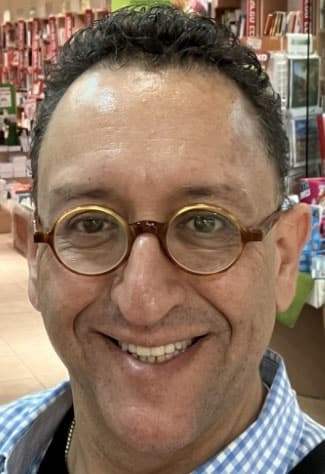In the fall of 1989, I began the process of pursuing rabbinical ordination. Although I would eventually be ordained at Yeshiva University in New York, I did commence my studies as a Jewish Theological Seminary (JTS) student, opting to do my first year at the University of Judaism (UJ) in Los Angeles (this was pre-Ziegler School, when the UJ served as a feeder school to JTS in New York).
I entered the program with full confidence that it was the right place for me. I was not really looking to become an “Orthodox rabbi” or a “Conservative rabbi,” rather, I was looking for the place where I felt I would study the most Torah in the next four to five years of my life. So I entered the JTS/UJ program, looking forward to an intellectual and spiritual environment where students would have the opportunity to explore Torah to its fullest potential, both within the classroom and beyond.
During the first few weeks of the semester, the majority of the students were complaining that the program was academically overloaded, and that the atmosphere on campus was void of spirituality. We convened a students meeting to address these issues, and a group of us came up with a solution that we felt would solve both the academic and spiritual problems. We felt that the opening of a beit midrash (a study hall dedicated to Torah study, where rabbinical students would study texts in chavruta [study pairs]) would not only allow students more quality time to tackle the difficult texts they were studying in class, but would also enhance the spiritual environment on campus through lively Torah study. We suggested that a rabbi be made available to sit with us in the beit midrash to answer any questions we may have on the texts we were studying.
Excited by this prospect, we approached the director of our program with our proposal. His answer still rings clearly in my mind 14 years later: “My dear students, this is an academic seminary, not a yeshiva. In academic seminaries, we do not have a beit midrash; we have research libraries. Students do not study in chavruta, they conduct individual research. We do not engage rabbis who sit around waiting for any questions you may have. Instead, we have professors who are available during their office hours or by special appointment. I remind all of you that you are graduate students in a graduate program, not yeshiva students in yeshiva. To those who would prefer a program with all of the trimmings of a yeshiva, I suggest you go to a yeshiva.”
The next morning, I announced to the director that I would be following his sage advice.
P.S., In the Spring 2003 edition of the JTS Academic Newsletter, Rabbi William H. Lebeau, the current dean of the JTS Rabbinical School, writes: “Chavruta study in the Matthew Eisenfeld and Sara Duker Beit Midrash of JTS has become a centerpiece for the study of sacred texts by JTS rabbinical students. An extensive study of the impact of the JTS beit midrash on the rabbinical students and the larger culture of the JTS student community revealed that chavruta study that takes place in a comfortable environment where open conversation and debate are encouraged — and support from fellow students and skilled teachers is readily available, not only increases the student’s productivity and understanding but their enthusiasm for text study as well.”
Chavruta study in a beit midrash has been the intellectual and spiritual heart of Torah study everywhere in the Jewish world for the last 2,000 years. My most precious moments of Torah study were never in the classroom, but with my chavruta in the beit midrash. I am genuinely thrilled to learn that JTS has added this time-honored dimension to its program.
Chavruta study should never be classified as belonging to an “Orthodox yeshiva” vs. a “Conservative seminary.” The beit midrash belongs to the whole House of Israel, and chavruta study belongs to every Jew, including the non-yeshiva, non-seminary student, who just wants to “sit and learn.” Chavruta study in a beit midrash intellectually empowers you and reminds you that the Torah is the spiritual heritage of the entire Jewish community, irrespective of denominations.
As we celebrate Shavuot, the day when we all received the Torah together, consider setting up a chavruta with somebody and studying Torah on your own. You can turn your own living room into a beit midrash, or you can choose one of the local batei midrash. Yeshiva of Los Angeles on Pico Boulevard just built a sparkling new beit midrash, and, I am pleased to say, the UJ’s Ziegler School now houses the beautiful Sara and Simha Lainer Beit Midrash.
Daniel Bouskila is rabbi of Sephardic Temple Tifereth Israel.





















 More news and opinions than at a Shabbat dinner, right in your inbox.
More news and opinions than at a Shabbat dinner, right in your inbox.